ASSAM & BHUTAN EAST - WEST
Tour - 20 days
Assam & Bhutan East - West
Tour - 20 days
About Assam & Bhutan
Assam is the only state in north-east India that is almost entirely low-lying. It consists largely of the flood plains of the Brahmaputra, one of the largest untamed rivers in the world. The climate is ideal for rice cultivation, all kinds of tropical crops, bamboo cultivation and fish farming.
Assam is relatively densely populated. The legal part of the population consists of at least 35 million people on an area of 78,000 square kilometers (similar to Czechia, a bit smaller than Austria), the illegal part at least 5 million.
Read more…Read less…
The name Assam comes from the same origin as Siam, which means Thailand. The larger part of the population finds its roots far to the east, from where their ancestors, the Ahums, entered the area in the 13th century. For more than 600 years, the Ahums upheld a kingdom in Assam. However, especially in the last two centuries the Assamese culture, language and genetics have changed due to immigration from India, Nepal and later Bangladesh.
Before the Ahums settled in the Brahmaputra Plain, other peoples already lived here. The most important of these are the Bodos, who now live mainly in the north and northwest of Assam (population about 1.5 million).
Bhutan is not your average destination. And that’s probably the understatement of the century. For starters, it’s the only remaining Buddhist Himalayan kingdom, the only one that escaped assimilation by either China or India. Being only the size of Switzerland and having just over 700,000 inhabitants, that’s quite a feat in itself.
Bhutan is mainly known for its very original culture and nature. This is largely due to the centuries of isolation, but also to the deliberate policies of the present government and of the kings in the past.
Read more…Read less…
HAPPINESS OVER WEALTH
Until the seventies hardly any foreigner had set foot in the secluded kingdom. However, in 1972, at the occasion of the crowning of king Jigmed Singye Wangchuk, many foreign guests were invited to Bhutan. Having studied in the U.K., the future king obviously saw it coming that especially the western guests would observe a discrepancy between their own standard of living and that of most Bhutanese.
In his opinion, the Bhutanese were not poor, but merely lacking in some amenities and products that in the west would come at a considerable monetary price. Otherwise, the Bhutanese were actually quite well off, he felt. Almost all of them had a beautiful, spacious farmhouse, more than enough forests, arable land and animals to be fully self-sufficient in terms of heating, construction and nourishment. And, most importantly, a culturally defined sense of identity, belonging and security that made most of them very content and happy beings. The king had observed otherwise in the west. In order to explain this to his foreign guests, he coined the term ‘gross national happiness,’ a clever term, obviously meant to be juxtaposed with what seemed to be the aim of most governments, a high gross national product.
The rest is history, one could say. These days, all over the world, conferences and workshops are being held on happiness and, more in general, on how to develop and emphasize those qualities of life that can not be measured in dollars or euros.
Bhutan does not claim that its inhabitants are the happiest in the world, but it does place overall happiness above wealth. These days, GNH, as it is generally referred to, is the formal pillar and yardstick of all government policies. After the king abdicated his powers in favour of a democratically elected government, Bhutan has seen four governments.
As a result, Bhutan has protected its culture – largely defined by Buddhist beliefs – but also its forests, mountains, rivers and wildlife – much better than any other country in Asia. Key to all this is a reliable, non-corrupt government. This, in itself, is one of the four pillars of GNH, and, frankly, quite the exception in the region.
TEMPLES, DZONGS AND FORESTS
On your trip through Bhutan you will see numerous temples, monasteries and dzongs (monastery castles), better preserved and more lavishly decorated then than anywhere else in the ‘Tibetan’ realm. Not less impressive, if alone because of their rustic beauty, are the many traditional houses, and meeting the friendly, warm-hearted people who embrace their culture as a precious heritage.
Bhutan is also extremely mountainous and rich in nature, especially forest. In fact, it is the most wooded country in Asia. The southern border consists of hills and low mountains with dense jungle where elephants and tigers roam. Higher up, in the central highlands at an altitude of 1500 – 2500m, most people live in mountain villages amidst coniferous forests in farms reminiscent of Swiss chalets.
Travelling through this area (and when you fly over it) you will occasionally catch a glimpse of the northern and highest parts, where the yak shepherds live and which are bordered by glacier-covered Himalayan peaks. The only way to see this up-close is to set out on a seven-day (or more) camping trek.
Region
Butan
Best Time
Feb - April & Nov.
No. Of Days
20 days
Trip Character
Jeep tour with walks
Sleeping Altitude
175 - 2900 m
Price
INR XXX/ $ XXX
ABOUT THIS TOUR
On this unique tour you visit two areas that, although adjacent, are very different: the low-lying fertile plains of Assam and the mountain kingdom of Bhutan. From Delhi you fly to India’s easternmost city, Dibrugarh, where you have a day to relax at a historical tea bungalow amidst expansive tea gardens. After visiting some of the most interesting Ahum monuments in Sibsagar, you cross the Brahmaputra to idyllic Majuli island, home to a unique culture of Vaishnavite Hindu monasteries. After this you’ll visit Kaziranga National Park, famous for its large population of Indian rhinos, but also wild elephants, wild buffaloes, tigers and much more.
Traversing the Brahmaputra floodplain, you’ll reach Samdrup Jongkhar at the border in Bhutan. From here, you’ll travel up through orchid-covered forests up to the high valleys of Bhutan. Crossing the country East- West, you’ll get an excellent and complete impression of the country. You’ll visit parts of the country that rarely see foreign visitors, but also the highlights of western Bhutan that are definitely not to be missed.
Moreover, the trip is very cost-efficient compared with trips where you fly in and out and are forced to return halfway on the same road or by domestic flight.
Traveling along Bumthang, Trongsa, Phobjikha and Punakha, you’ll finally reach Thimphu with its more mundane – but still extremely laid-back – atmosphere. Lastly, you’ll visit Paro and walk up to the famous Taktsang Goemba (Tiger’s Nest Monastery), which will be a true cherry on the pie of this trip.
In addition, you will have the opportunity to do day walks that allow you to reach places where jeep tourists can’t go, such as villages where the ravages of time have not gotten any hold, small remote monasteries, and fairy-tale forest. These walks are never ‘compulsory’, there is always an alternative program.
And, if possible, you’ll witness a tsechu (traditional Buddhist festival). Just give us your preferred travel dates, and we’ll try to fit one in.
YOUR custom-made TRIP
The tour described here, as well as the other ones on our website, are mainly meant as suggestions. We would be happy to offer you a travel proposal that fully meets your personal demands and expectations. That means that you choose where you want to go, what level of accommodation and type of transport you want and what activities you prefer.
Please let yourself be inspired by this and other trips on our website and then drop us a line (or call us) to explain your travel wishes. We will be happy to help you put together the perfect trip. You can reach us over e-mail, Messenger, Whatsapp or mobile phone.
EXTENSIONS & VARIATIONS
Apart from the tour as described here, you could consider the following add-ons and changes:
- If you’re wild about wildlife one or several extra days at Kaziranga are recommended. There is a lot to see in the six different ranges, and the longer you stay, the better your chances of seeing some of the more elusive species.
- Spend two to six days extra on exploring remoter towns and valleys north of the main road, such as Trashigang, Lhuentse and Gasa.
- Spend two to six days extra for exploring remoter towns and valleys north of the main road, such as Trashiyangtse, Lhuentse and Gasa.
- Spend another day in Thimphu, for instance at the end of the tour. Because, although Thimphu is by far Bhutan’s most ‘mundane’ place, it has a lot to offer in terms of culture, restaurants and cafes, shopping, and a very pleasant atmosphere.
- Do a short trek which takes of the beaten track, along time-warped villages and high yak pastures. For instance a two-day trek in Bumthang, from Jakar to Tang and over de Phephe La (pass) to Nang Lhakhang. Or the three-day Saga La Trek from Haa upto the Che La pass. On longer treks (seven days minimum) you can get up-close with the Himalayan giants, such as Mt. Jhomolhari (7326m). For the latter, see here.
- Spend a day rafting on the Punakha River. There are different grades available, so there is the easy-but-fun-to-do level as well. Professional oarsmen will be with you in any case. You will be picked up from your hotel and dropped off there again at the end of the day, a pic-nic lunch is included.
ITINERARY
-
Day 1: Delhi ✈︎ Dibrugarh
At Dibrugarh airport you’ll be greeted by our staff and then transferred to an extremely atmospheric former tea bungalow, now a luxurious hotel. This 19th century wooden structure was built on stilts to give protection from the wild animals. Altitude 110m. -
Day 2: In Dibrugarh
A relaxed day. You can see how tea picking works and/or take a walk on the beach of the majestic Brahmaputra. Or you can visit a small Thai Buddhist village (2 hours driving). The local monks and laymen preserve their original culture very well. Altitude 110m. -
Day 3: Dibrugarh - Sibsagar - Majuli Island (3.5 h drive)
Our first stop is at the famous 16th century Ahum monuments of Sibsagar and at the largest Shiva temple of India. Believers go in and out of the temple, which is a fascinating sight in its own. By ferry we cross the Brahmaputra to quiet Majuli, one of the largest river islands in the world. Overnight is in simple but rustic and clean cottages. Altitude 110 → 65m. -
Day 4: On Majuli Island
Majuli is a paradise for water birds, but it is best known for its Satras. These are kibbutz-like monasteries where Hindu monks who belong to Vaishnavism live. We will witness monks performing dances, which have acquired UNESCO World Heritage status. Options in the afternoon are: visit of mask factory or the museum of another Satra. Or you can go for a very enjoyable bicycle trip, riding over small dikes and passing through many small Mishing villages. Altitude 65m. -
Day 5: Majuli - Kaziranga N.P. (97 km/ 3h)
In the morning we cross the Brahmaputra again and then drive to Kaziranga N.P., where we check into a comfortable lodge with lush gardens. In the afternoon we do our first open-jeep safari. Kaziranga is the best place to view the Indian Big Five: Indian rhino, tiger, leopard, buffalo and elephant. It is a World Heritage Site for nature. Altitude 65→ 95m. -
Day 6: In Kaziranga N.P.
Again you’ll do two jeep rides, each in different parts of the park. The park has seven different ranges, each with its own landscape and different chances of seeing particular species. Altitude 95m. -
Day 7: Kaziranga - Guwahati (4.5 h)
We drive to Guwahati, and check into a comfortable guesthouse. In the afternoon you can visit the Kamakhya Temple, the largest Hindu temple in Norheast India, as well as the Kalakshetra, a sprawling enclosure depicting cultures and traditions of Northeast India. Altitude 55m. -
Day 8: Guwahati - Samdrup Jongkhar (3.5 h)
Today you travel north towards the Himalayan foothills. You'll cross the Bhutanese border to the small town of Samdrup Jongkhar. Altitude 55 → 175m. -
Day 9: Samdrup Jongkhar – Trashigang (6 - 7 h)
As you ascend the road north to Trashigang, you pass through a variety of vegetation zones in the Himalayan foothills. The roadside is rich in plants including tree ferns and massive rhododendrons trees (floweing in spring). Altitude 1200 → 2300 → 1600m. -
Day 10: In Trashigang
The magnificent dzong is probably your first destination today. A dzong is a uniquely Bhutanese and Tibetan phenoma. It is a monastery, district administration office and (in the past) military fort at once. The small, picturesque town center consists of almost circular front of houses, built around a small square with a large prayer wheel. Just an hour’s drive from town is the interesting little temple of Gomphu Kora. On March 21-23 a Buddhist festival is held here. Altitude 1200m. -
Day 11: Trashigang - Mongar (4 h)
Today's firsts top is at Drametse Goemba (goemba=monastery), located on a side road. It is famous for the Dramtse Nga Cham, a masquerade accompanied by drums labeled a masterpiece of oral and intangible heritage by UNESCO. Travelling westwards you drive along a series of hairpin bends up to the Kori La (2300m; la = pass), then descend to sleepy Mongar. Altitude 1200 → 2300 → 1600m. -
Day 12: Mongar – Bumthang (6 - 7 h)
Today is a beautiful and spectacular ride. The road, partly carved into vertical cliffs, switchbacks up to the Thrumshing La (3600m). This area is a protected national park for Bengal tigers. Ura is a beautiful village on the way. Overnight in Jakar. Altitude 1600 → 3600 → 2800m. -
Day 13: In Bumthang
In terms of Buddhist cultural heritage, there is no place like Bumthang. In consultation with the guide you can decide which ones of the many temples you want to visit. Altitude 2585m. -
Day 14: Bumthang - Phobjikha
oday is a beautiful ride again. First you pass the utterly picturesque Chumi Valley and Trongsa with its remarkable, elongated dzong. Driving up to the Pele La (3600m), you may notice (again) how unbelievably green and forested Bhutan is. From the pass you descend to the high Phobjikha. Altitude 2585m. -
Day 15: In Phobjikha
Phobjikha is a protected conservation area where black-necked cranes live. On a walk through the valley you hopefully will see the cranes. And you can visit Gangte Goemba, belonging to the Nyingmapa, the oldest Buddhist sect in Bhutan and Tibet. Altitude 2900m. -
Day 16: Phobjikha – walk (5 h) & drive to Punakha (3 h)
In the morning we follow a mountain trail that leads over a small pass through beautiful forest to the road to Punakha. By car we continue to relatively warm Punakha Valley. Time permitting, we visit the magnificent dzong. Altitude 2900 → pass → 1300m. -
Day 17: Punakha – Thimphu (2.5 h)
In the morning you can visit the dzong (if not visited yesterday) and a number of other attractions. After lunch you drive to Thimphu, the capital of Bhutan. We'll stop at the Dochu La (3120m) to enjoy views of towering Himalayan peaks. Also possible: walks in the beautiful cedar woods or to a little monastery. Altitude 1300 → 3120 → 2350m. -
Day 18: In Thimphu
You have the whole day to explore Thimphu. Besides the many options listed in the highlights below, you can visit the archery range and the animal park with the takin, the national animal of Bhutan. Or you can walk to a nearby monastery in the woods with beautiful views. Altitude 2350m. -
Day 19: in Paro, walk to Tigersnest
Today you do the hike to the famous Taktsang Goemba, better known as Tiger’s Nest. It's 2.5 h walking up and 1.5 h down, but the magical little temple is worth it. After the walk there may be some time to explore Paro. Altitude 2250 → 3120 → 2250m. -
Day 20: Paro ✈︎ Delhi
After breakfast you are transferred to Paro Airport, from where you return to Delhi or Kathmandu. In good weather, you can expect some spectacular views of Mt. Everest and other Himalayan peaks. If you have asked us to arrange accommodation and transfers in Delhi you will be picked up form the airport by our driver.
HIGHLIGHTS OF THIS TOUR
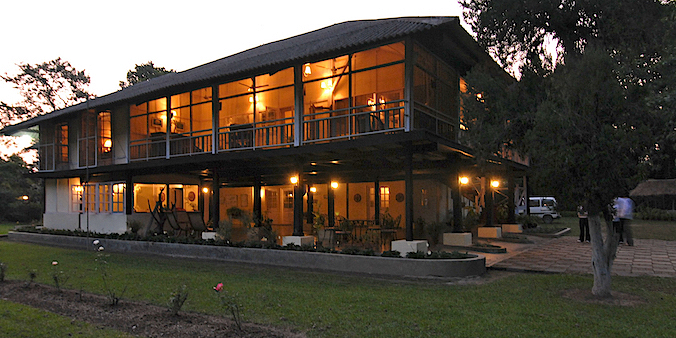
ANCIENT TEA BUNGALOWS
Tea Estates
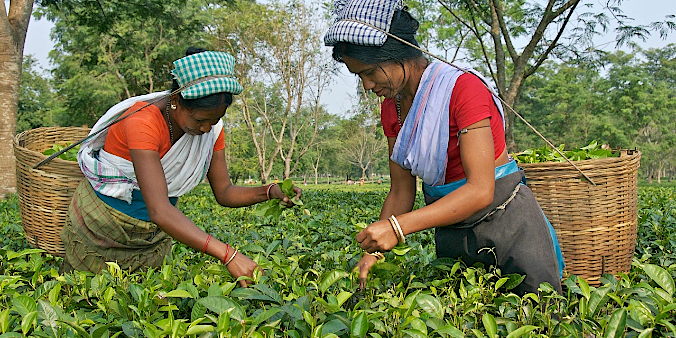
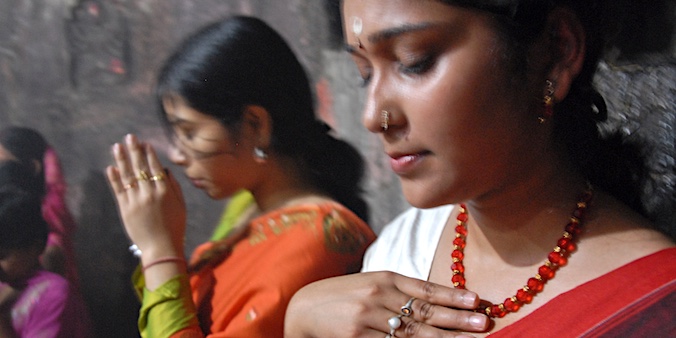
Sibsagar
The Brahmaputra
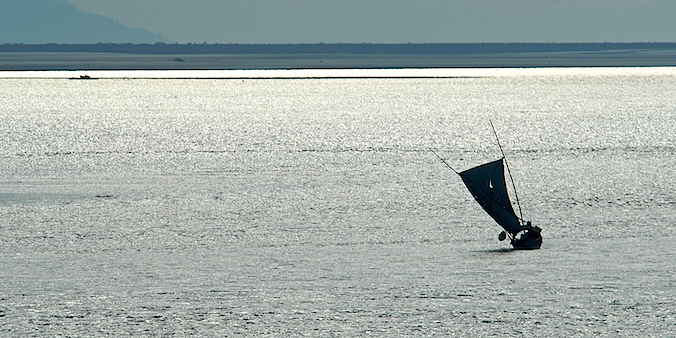
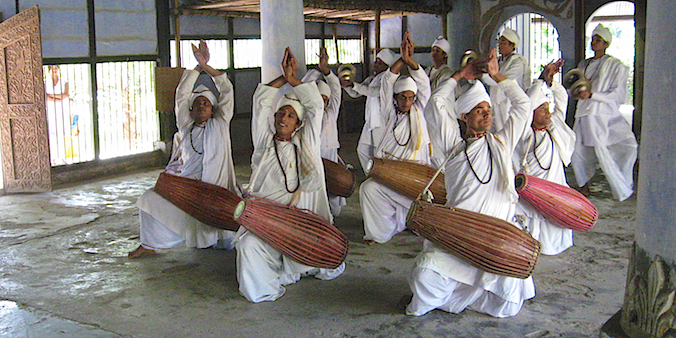
Satras of Majuli island
Kaziranga National Park
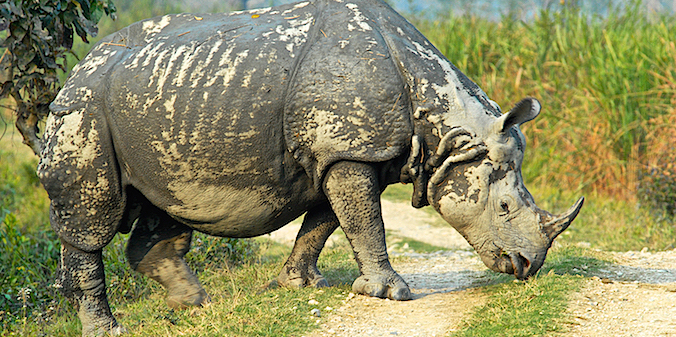
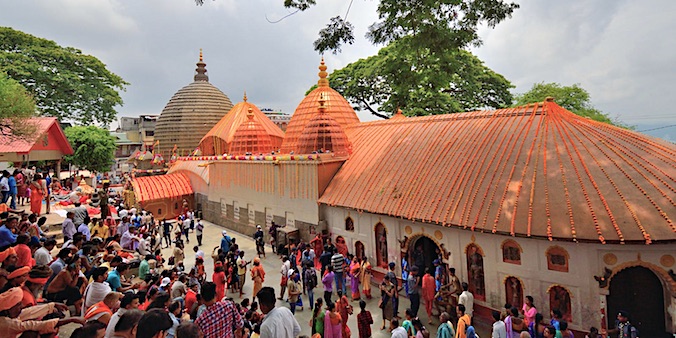
Guwahati
Eastern Bhutan
The east of Bhutan is three days driving away from Thimphu and Paro. That relative isolation reflects itself in an almost exclusive agricultural and largely self-sufficient society, where people live in small hamlets in traditional (wood, mud and rocks) houses. Even the roofing of wood shingles, which would be quite common in Bhutan till about two decennia ago, can still be seen in many places here.
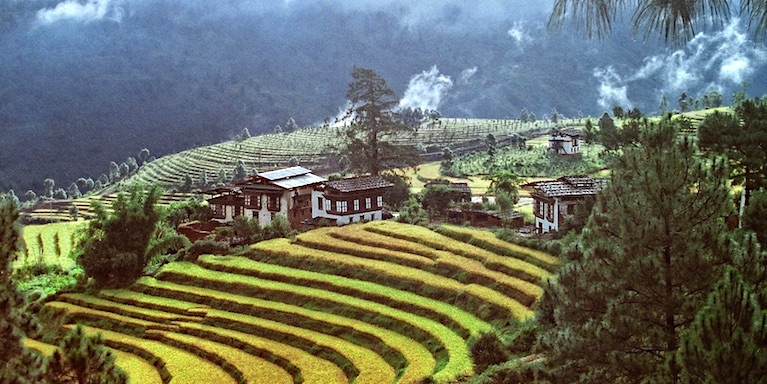
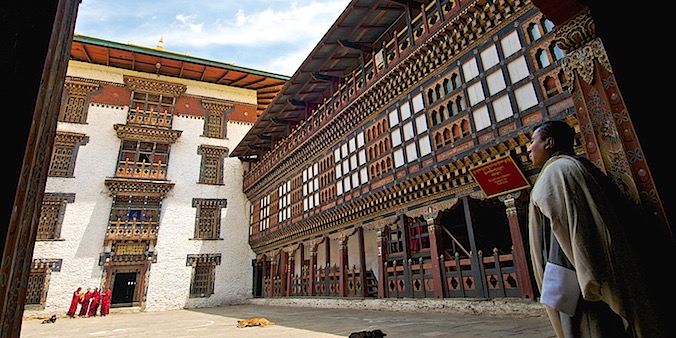
Trashigang
Gom Kora & Gom Kora Tsechu
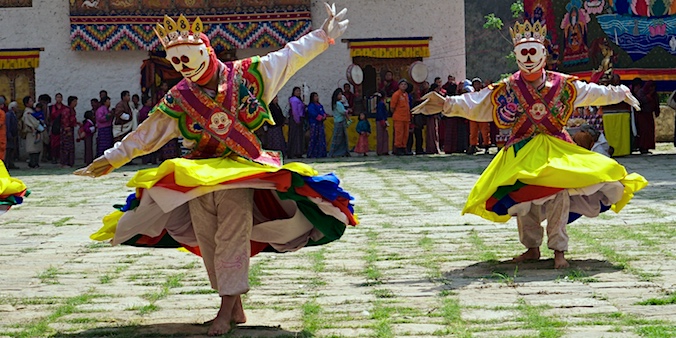
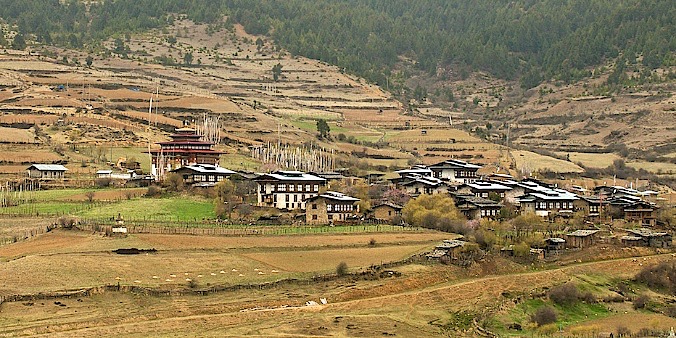
Road Mongar - Bumthang
The route from Mongar to Bumthang is one of the most beautiful road stretches in Bhutan. If not before, you will definitely appreciate the endless forests that cover the mountain slopes, speckled with tiny hamlets of farmers homes in forest clearings. On the way, you cross the 3780m high Thrumshing La, pass, where you are in the middle of a national park where tigers live. Some of these tigers have even been seen on the pass! Before you reach Jakar in Bumthang, you can visit the beautiful village of Ura with a striking temple. It lies at an altitude of over 3110 m and is therefore one of the highest villages in Bhutan where permanent agriculture is practiced.
Birding at YongKola


Bumthang
Temples of Bumthang
From your lodge in Jakar you can visit several beautiful temples on foot. Jambey Lhakhang is one of the oldest and most atmospheric temples in Bhutan. This temple, dating back to 659, was part of the project of the then Tibetan king to build 108 temples in order to nail down a giant demones that threatened the entire Tibetan cultural sphere. The main inner temple is dedicated to the Buddha of the future. It has three steps, the first one, representing the past, has already sunk into the ground, the second (present) is at floor level. When the third, raised one (the future) will have sunken into the ground the end of times will be there… At the Kurjey Lhakhang a wonderful print of Padmasambhava’s body can be seen. You cross the river via a suspension bridge to Tamshing Goemba (monastery) with its beautiful 17th century murals.
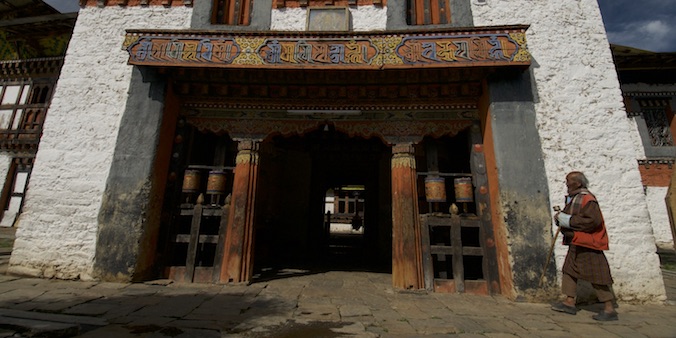
Trongsa Dzong
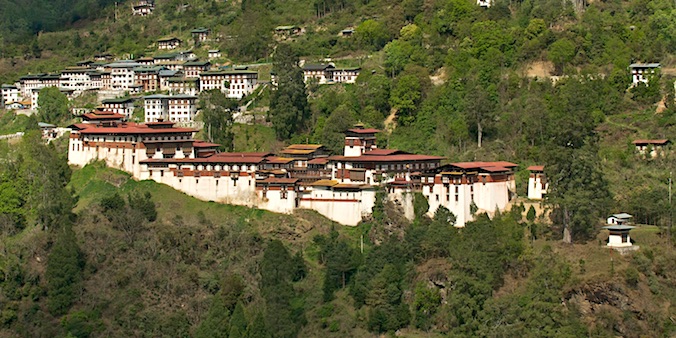
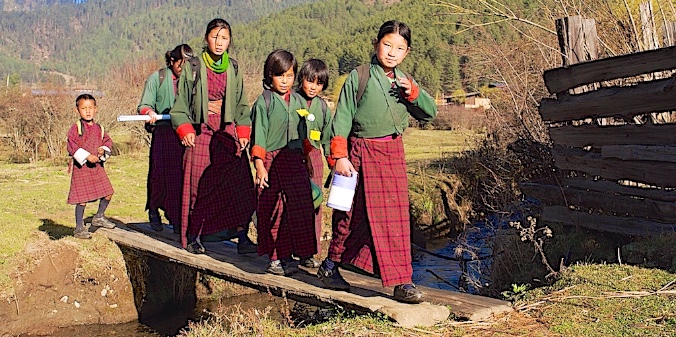
Phobjikha
Walks at Phobjikha
Phobjikha is not just a protected area, it is walkers paradise as well. Th three main valleys that converge near Gangte, where you will stay, offer gently sloping mountain sides with meadows and forests teeming with birds, interspersed with small hamlets of traditional farms. On the day you’re leaving Phobjikha, you’ll be offered the option of trekking rather than driving out. In case you are traveling west, you climb and then cross a pass to the northeast. You’ll get splendid views of Trongsa Valley, and, wheather permitting, of the Great Himalayan Range. After descending down to the road, the car will pick you for the onward journey. If you’re traveling west, you can take a similar walk, crossing a pass and descending through a magnificent rhododendron forest to the road to Punakha.
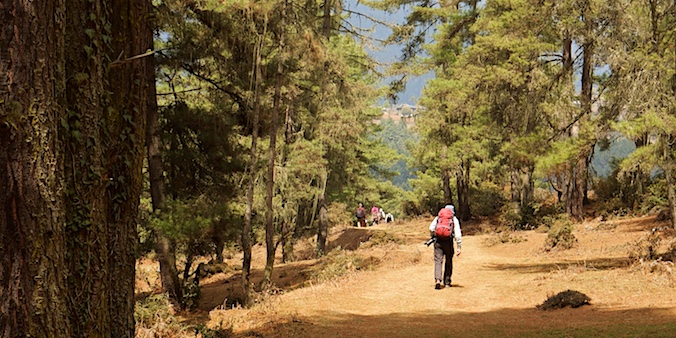
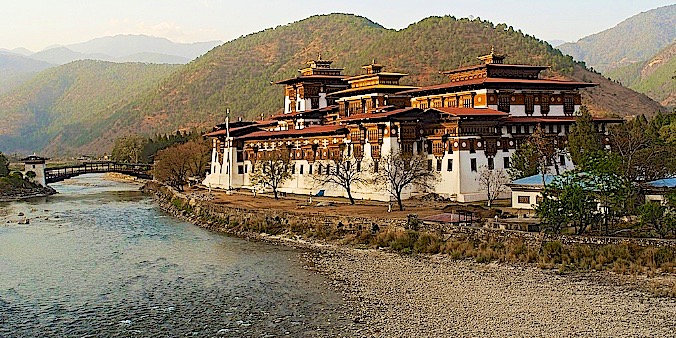
Punakha Dzong
Punakha - Other Sights
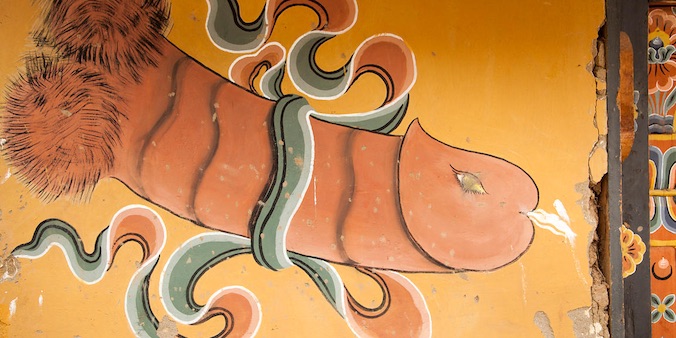
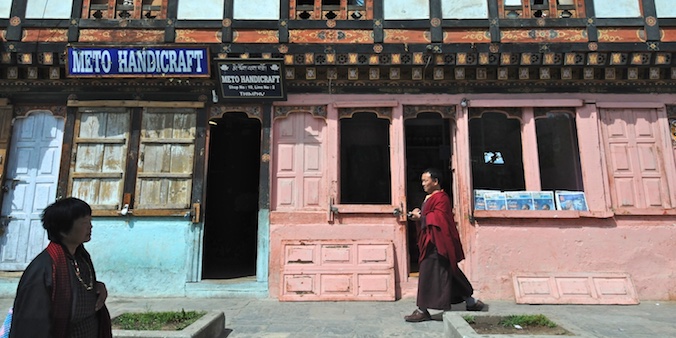
Thimphu
Sights of Thimphu
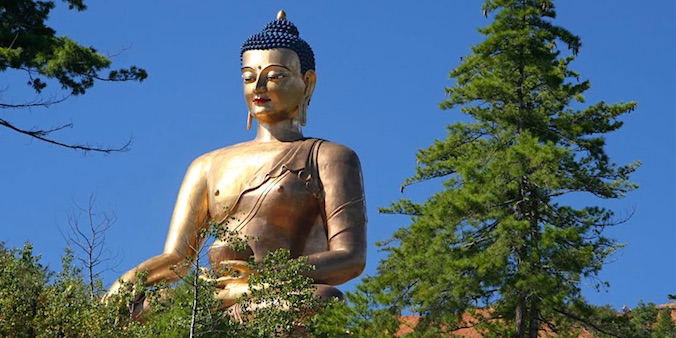
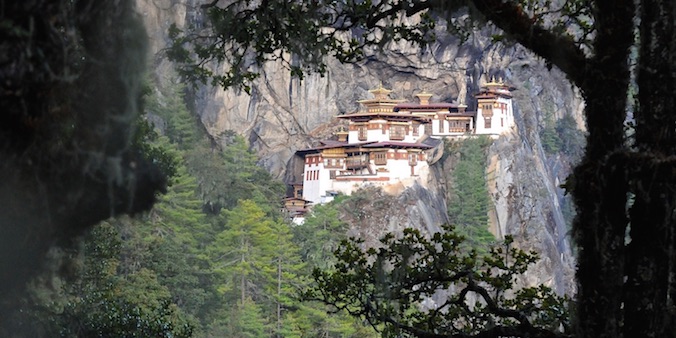
TakTsang Goemba (Tigersnest)
Paro
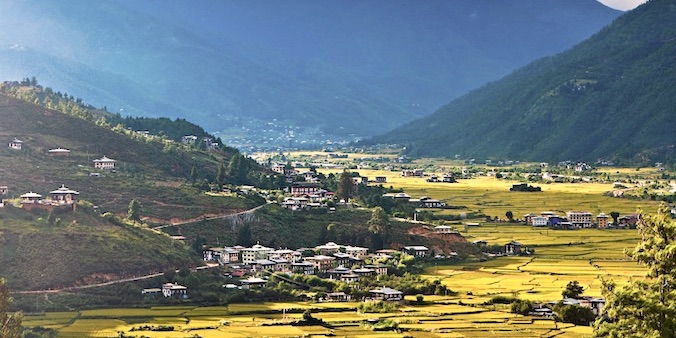
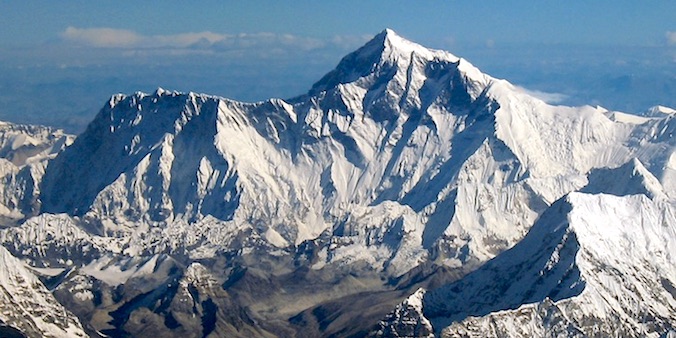
Flight Paro - Delhi (or Kathmandu)
Although the flight to Delhi takes only two hour, on a clear day this no doubt a highlight in itself. Taking off in the narrow Paro Valley might be a new experience for you, for starters. Then, after the green mountains of Bhutan have disappeared from your window you will see the vast floodplain of the Brahmaputra, with the wide, braiding river snaking through it. About one hour into the flight, you’ll pass world’s tallest mountains (on the right side). Mt. Everest, Lhotse and Kangchenjunga, to name a few. In case you are flying out to Kathmandu, you will get much closer and therefore and even better views of these big guys.



